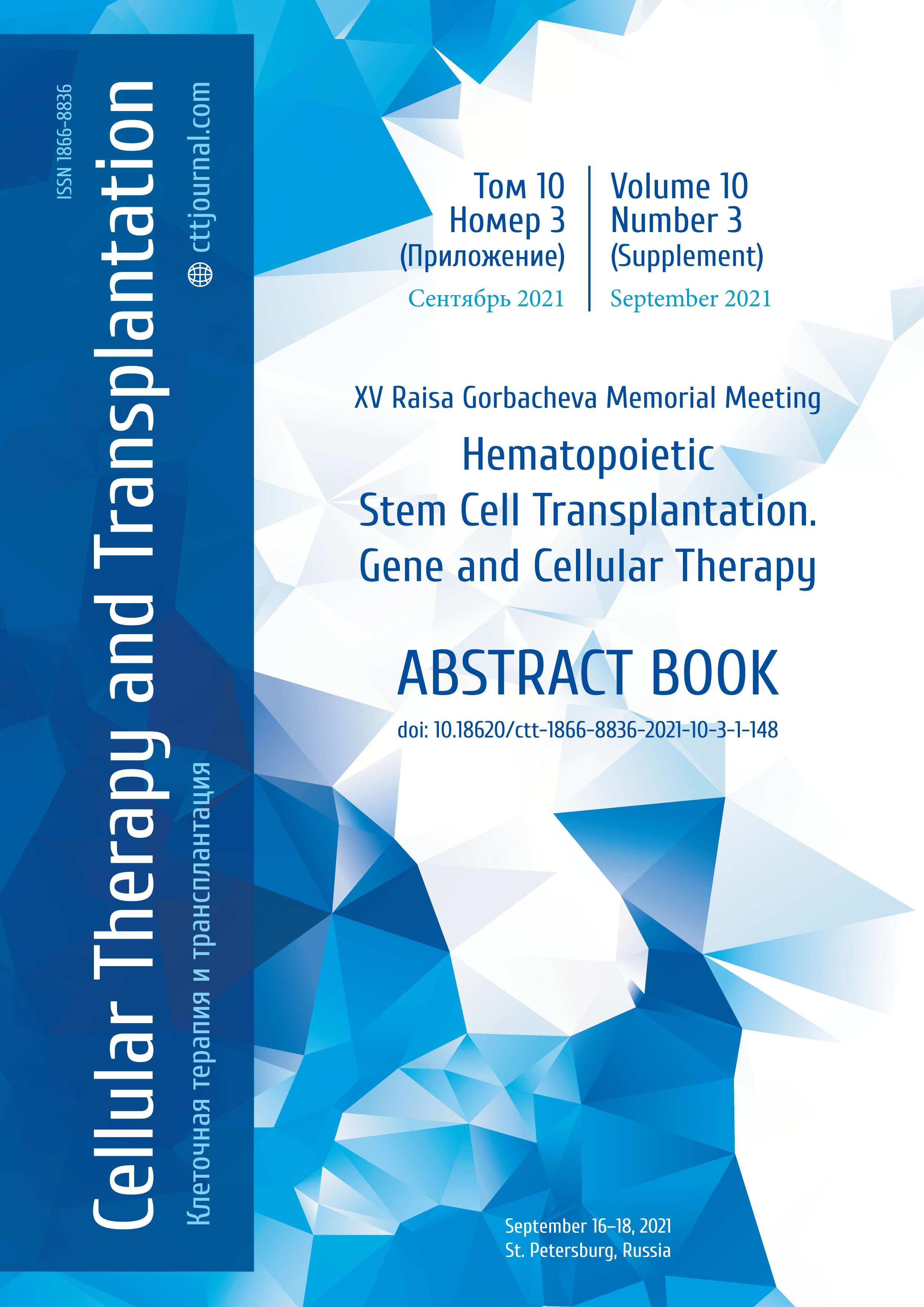GC-12. Combining bispecifics and CARs: novel design of chimeric antigen receptor with CD3E extracellular domain for redirecting antitumor specificity with bispecific antibodies
Daniil I. Shmidt1, Ivan N. Gaponenko1, Nikita D. Yolshin2, Olga S. Epifanovskaya1, Tatyana N. Belovezhets3, Andrey A. Gorchakov3, Sergey V. Kulemzin3, Andrey M. Chekalov1, Elena V. Babenko1, Albert R. Muslimov1, Vladislav S. Sergeev1, Kirill V. Lepik1, Alexander D. Kulagin1
1 RM Gorbacheva Research Institute, Pavlov University, St. Petersburg, Russia
2 Smorodintsev Research Institute of Influenza,
St. Petersburg, Russia
3 Institute of Molecular and Cellular Biology, SB RAS, Novosibirsk, Russia
Correspondence:
Dr. Daniil I. Shmidt, e-mail: daniil.shmidt@yahoo.com, lepikkv@gmail.com
Summary
Chimeric antigen receptor T cells (CAR-T) and bispecific antibody technologies (BsAbs) became a breakthrough in the therapy of relapsed/refractory B-cell malignancies. CAR-T cells possess not negligible toxicity that can be fatal in some patients, while their efficiency may be hampered by mechanisms of resistance, such as antigen escape and CAR-T exhaustion. Most of the BsAbs bind CD3 epsilon (CD3ε) protein on T-cells alongside with tumor-associated antigen, lacking important co-stimulatory signals present in CAR structure, which may limit their potential. Introducing CD3 epsilon as an extracellular portion of CAR allows to engage CAR in immune synapse formation using BsAbs. Our approach addresses limitations of both methods, combining potential for control of toxicity by controlling BsAbs infusion, ability to modify antigen-specificity by changing the BsAbs as well as enabling dual or multi-targeting. Moreover, the possibility of making CAR-T cells “rest” by stopping BsAbs infusion may presumably prevent their exhaustion [1].
Materials and methods
cDNA of extracellular domain (ECD) of CD3E gene was derived from healthy donor peripheral blood mononuclear cells (PBMC) mRNA and cloned to pIRES. Then CD3E ECD was inserted in pCDH lentiviral plasmid containing FMC63-CD8stalk-41bbz CAR with NGFR as reporter gene substituting FMC63 (clone 7). Lentiviral preparations were made using HEK293T cells and pMD2.G and psPAX2 packaging plasmids. Lentiviral preparation was titrated using HEK293 cell line. PBMCs of a healthy donor were separated using Ficoll density gradient centrifugation. Cells were plated at the density of 1-2*106 cells/ml and activated with 0.1 mcg/mL OKT3 antibody with 50 IE/mL of IL-2 for 3 days. On day 3 cells were transduced with lentiviral vector for 2 days. Cells were assessed for NGFR expression on day 5-8 post-activation using flow cytometry. On the next day after determining the percentage of NGFR-positive cells, cytotoxicity test was conducted. For cytotoxicity test Raji cell line stained with CFSE dye were plated with CAR-T cells at different effector:target (E:T) ratio in duplicates; BsAbs – blinatumomab or glofitamab – was added at different concentrations. Percentage of living target cells were determined by flow cytometry after 4 or 24 hours. Cytotoxicity was determined by the formula: 100 – cells alive/control cells alive (no effectors). Results. Lentiviral titer was 8×104/µL using HEK293T cells. Efficiency of T-cell transduction ranged from 30 to 90%. Cytotoxicity tests conducted for 4 and 24 hours with blinatumomab at concentrations 0, 10, 100 and 200 ng/mL at E:T ratio of 0.3:1, 1:1, 3:1, 5:1 did not reveal the difference of cytotoxicity from control T cells. Cytotoxicity with glofitamab was tested at concentrations 0, 1, 10 pM/L with E:T ratio of 0.3:1, 1:1, 5:1 for 24 hours. The most evident difference was seen in 5:1 E:T ratio with increase of cytotoxicity in CAR-T compared to untransduced T-cells at glofitamab concentration 1 pM/L (93% vs 59%) and 10 pM/L (96% vs 74%).
Conclusion
Novel chimeric antigen receptors with extracellular portion of CD3E redirected by bispecific antibody glofitamab, but not blinatumomab may have activity against B-cell lymphoma cells in vitro. These may be explained by the fact that OKT3 antibody fragment, on which blinatumomab is based, can’t recognize CD3E as monomer, only as a dimer [2-4]. Therefore, design of CARs with CD3epsilon/CD3gamma and CD3epsilon/CD3delta extracellular domains is warranted.
References
1. Weber EW, Parker KR, Sotillo E, et al. Transient rest restores functionality in exhausted CAR-T cells through epigenetic remodeling. Science. 2021.
2. Salmerón A, Sánchez-Madrid F, Ursa MA, Fresno M, Alarcón B. A conformational epitope expressed upon association of CD3-epsilon with either CD3-delta or CD3-gamma is the main target for recognition by anti-CD3 monoclonal antibodies. J Immunol. 1991.
3. Law CL, Hayden‐Ledbetter M, Buckwalter S, McNeill L, Nguyen H, Habecker P, Thorne BA, Dua R, Ledbetter JA. Expression and characterization of recombinant soluble human CD3 molecules: presentation of antigenic epitopes defined on the native TCR-CD3 complex. International Immunology, 2002.
4. Trinklein ND, Pham D, Schellenberger U, et al. Efficient tumor killing and minimal cytokine release with novel T-cell agonist bispecific antibodies. MAbs. 2019.
Keywords
CAR-T, chimeric antigen receptor, cell therapy, B-cell malignancies, bispecific antibodies.


